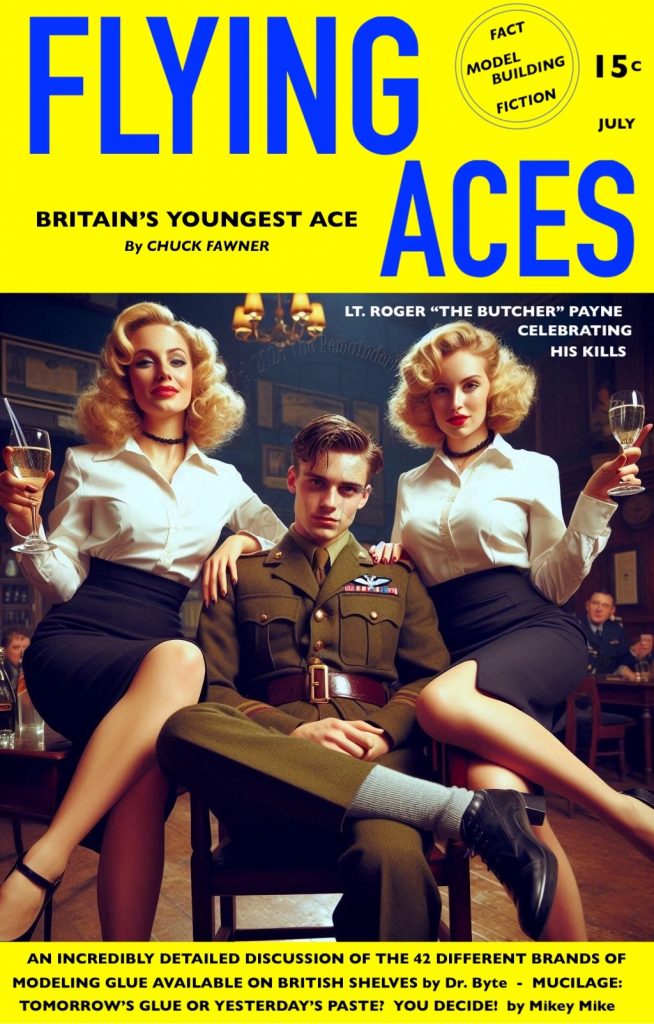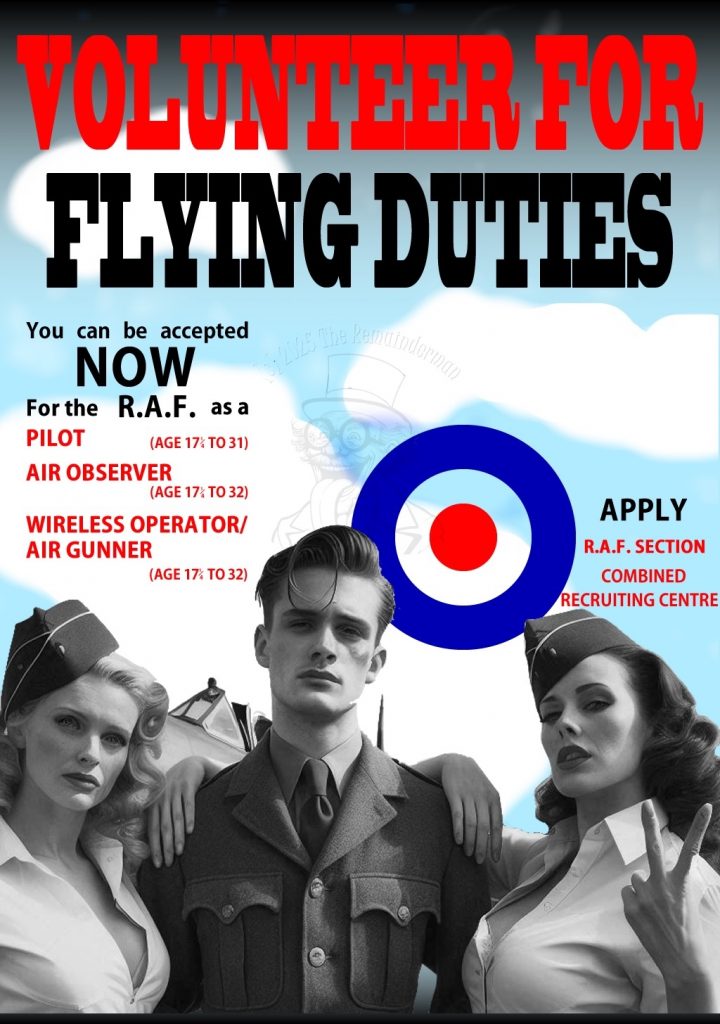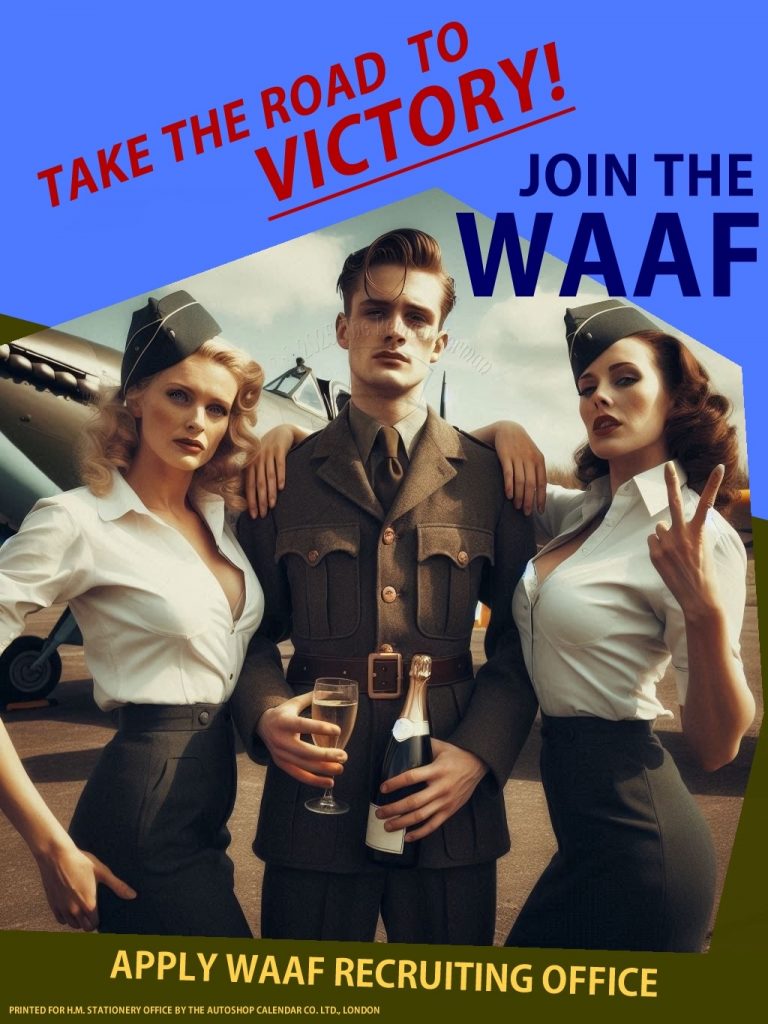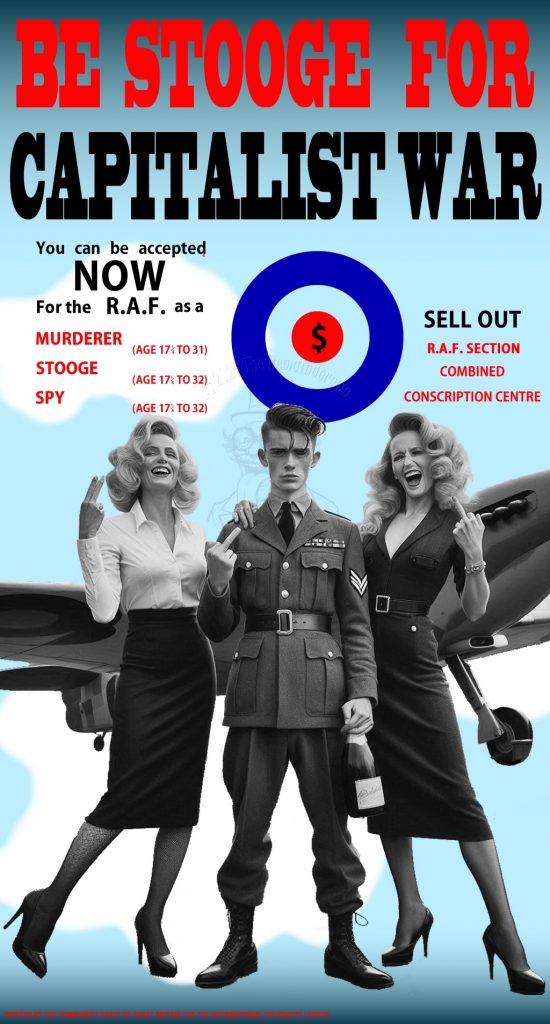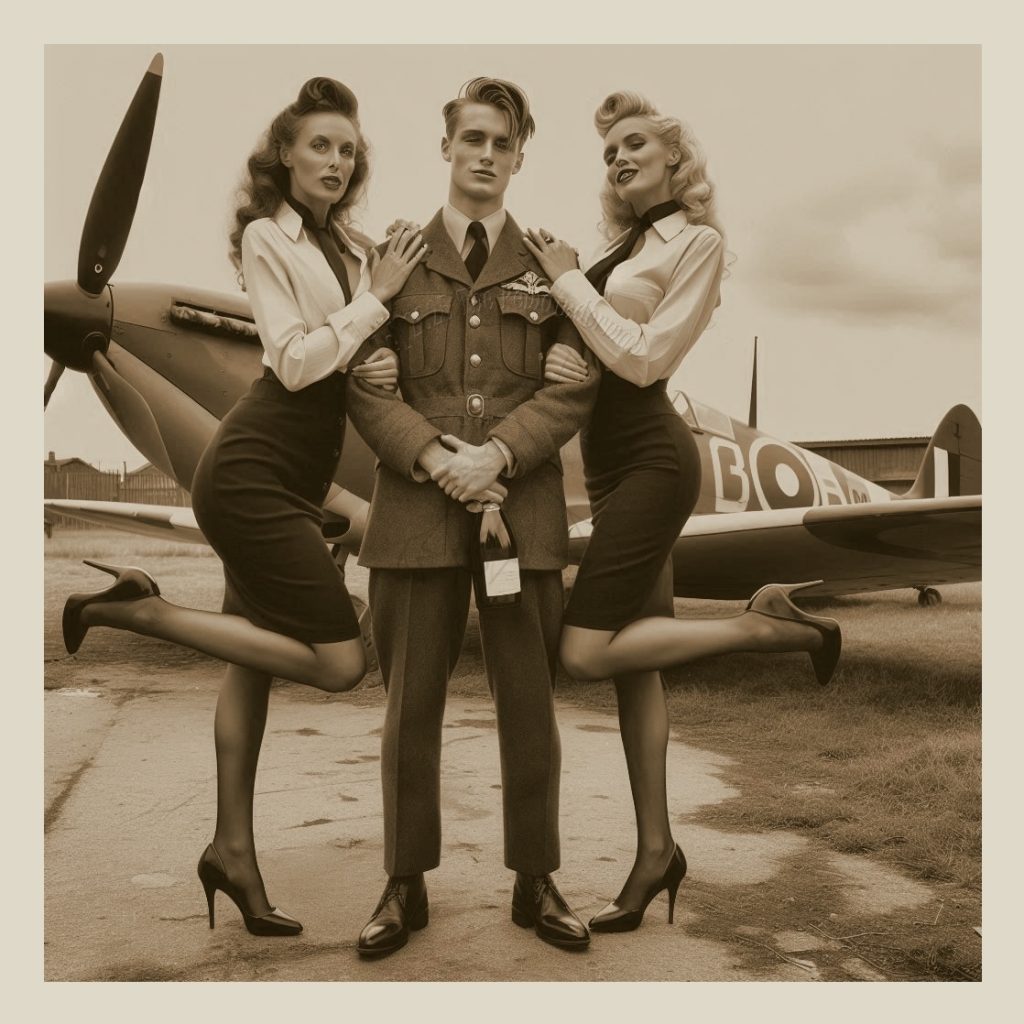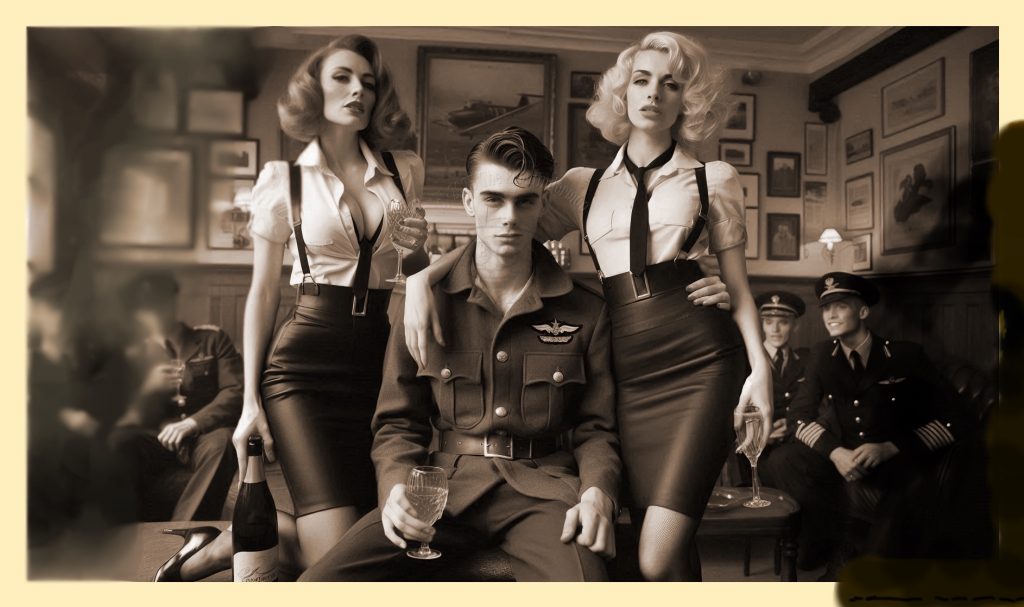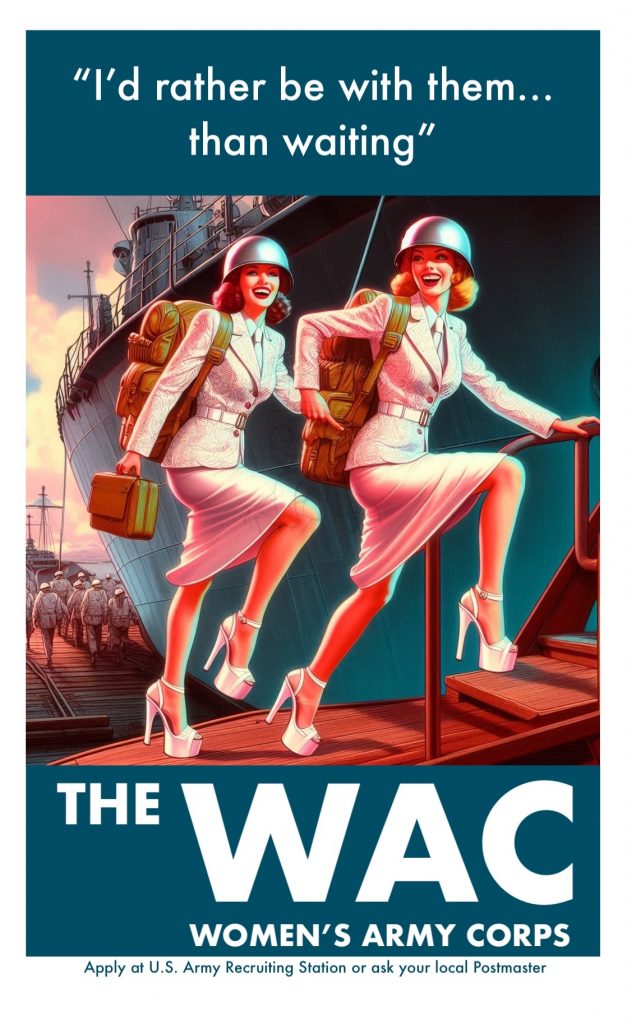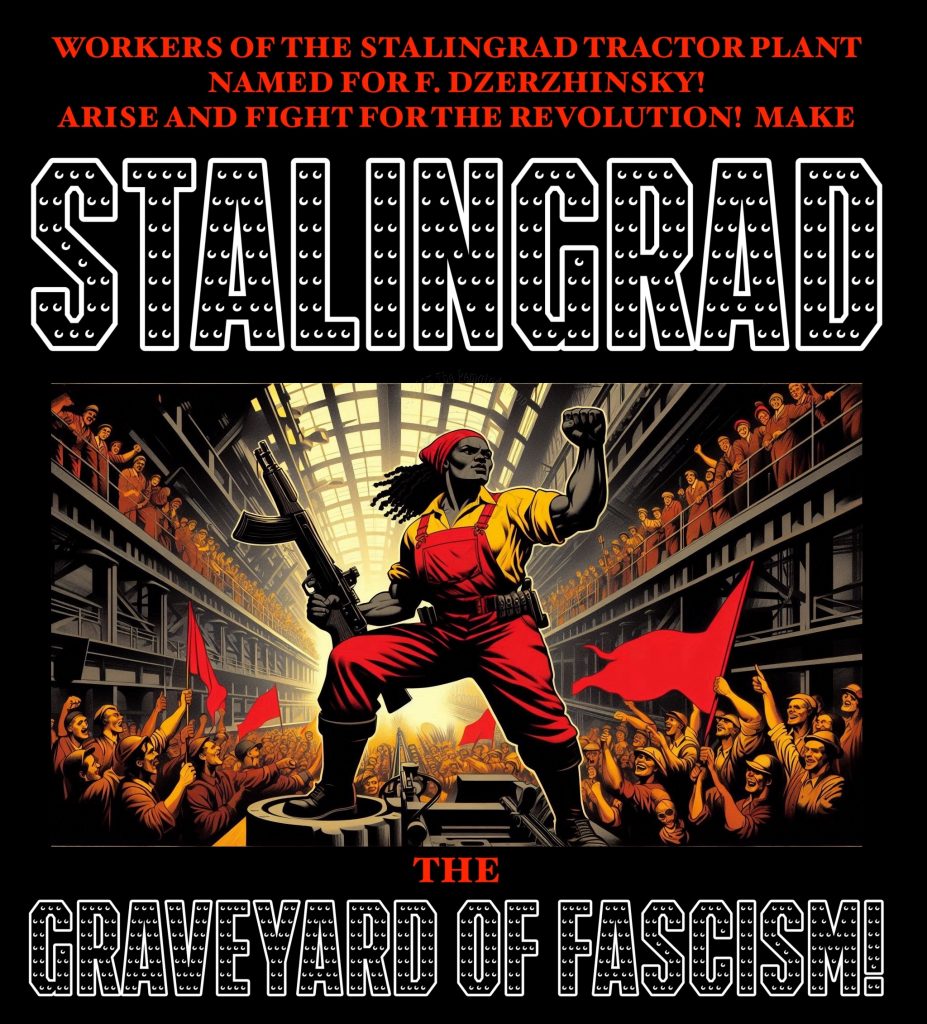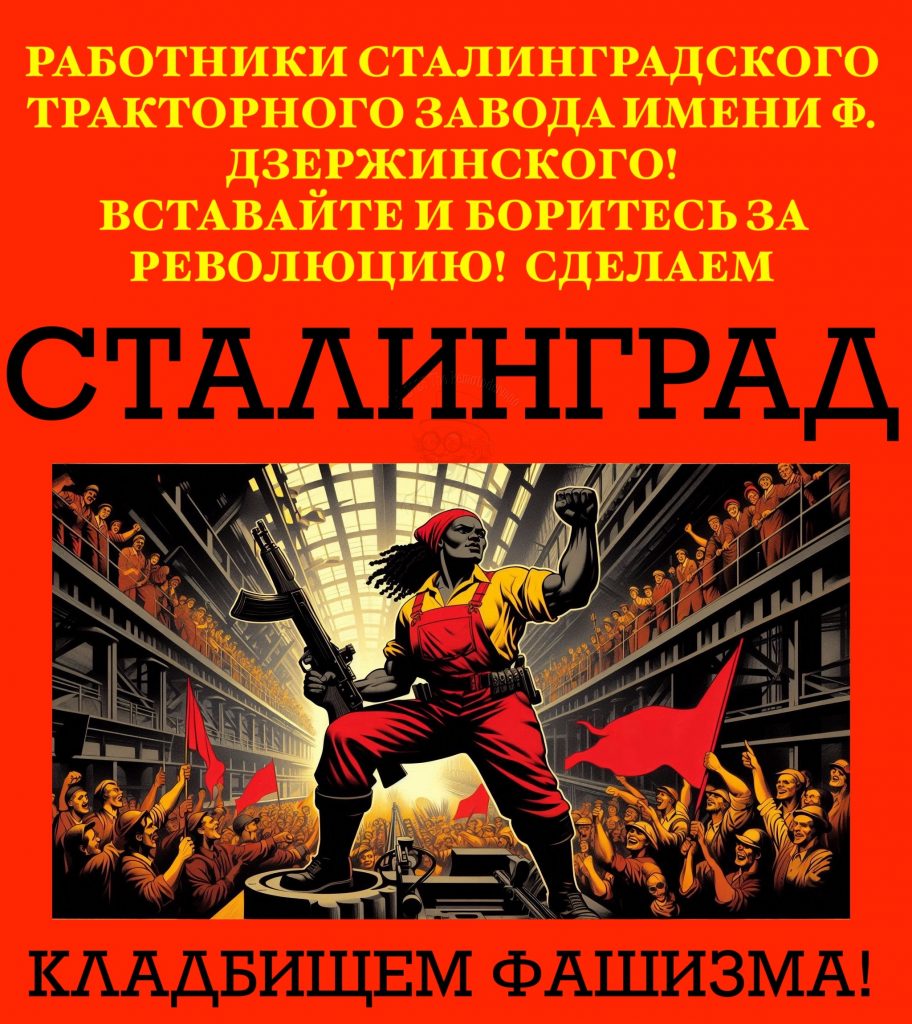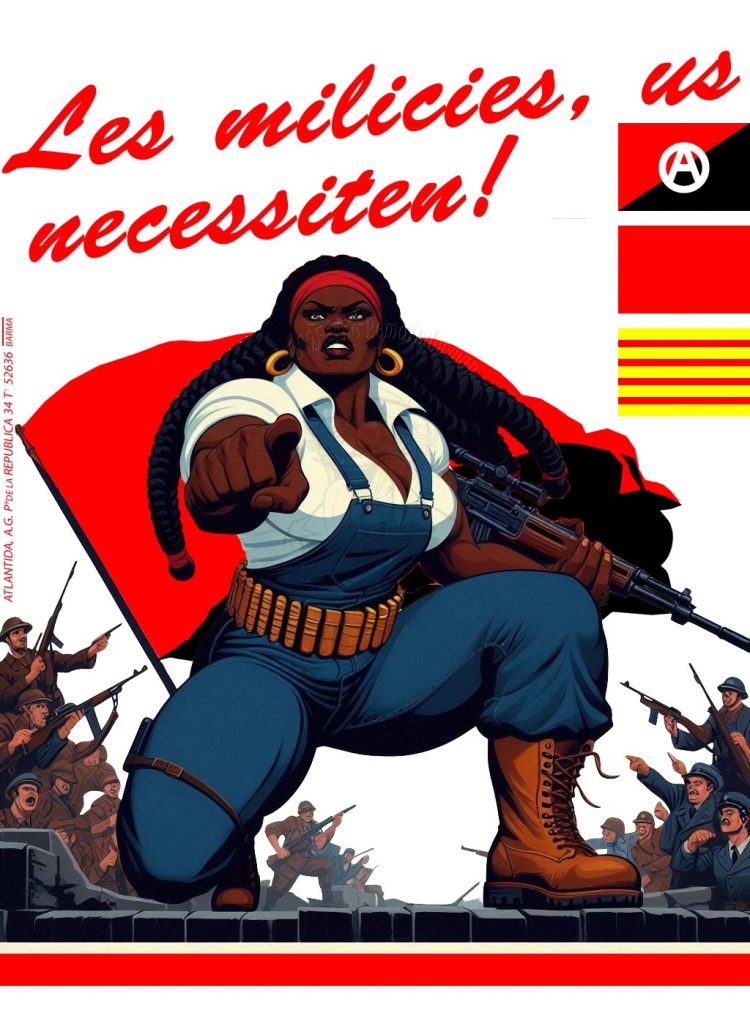
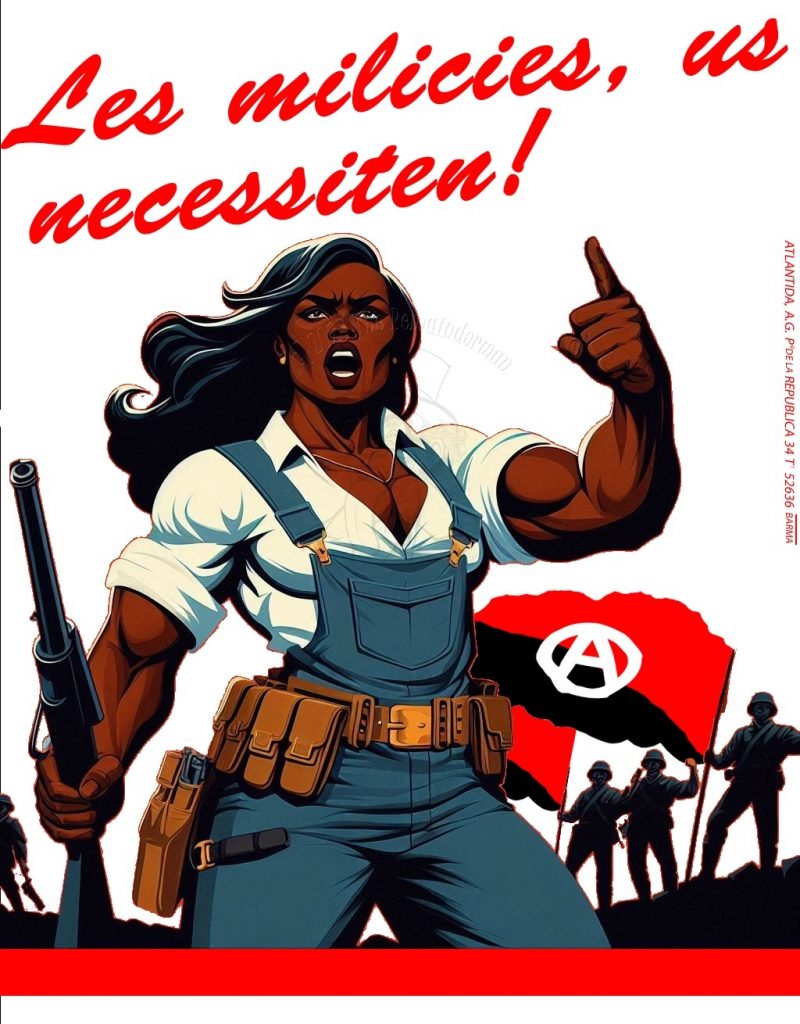
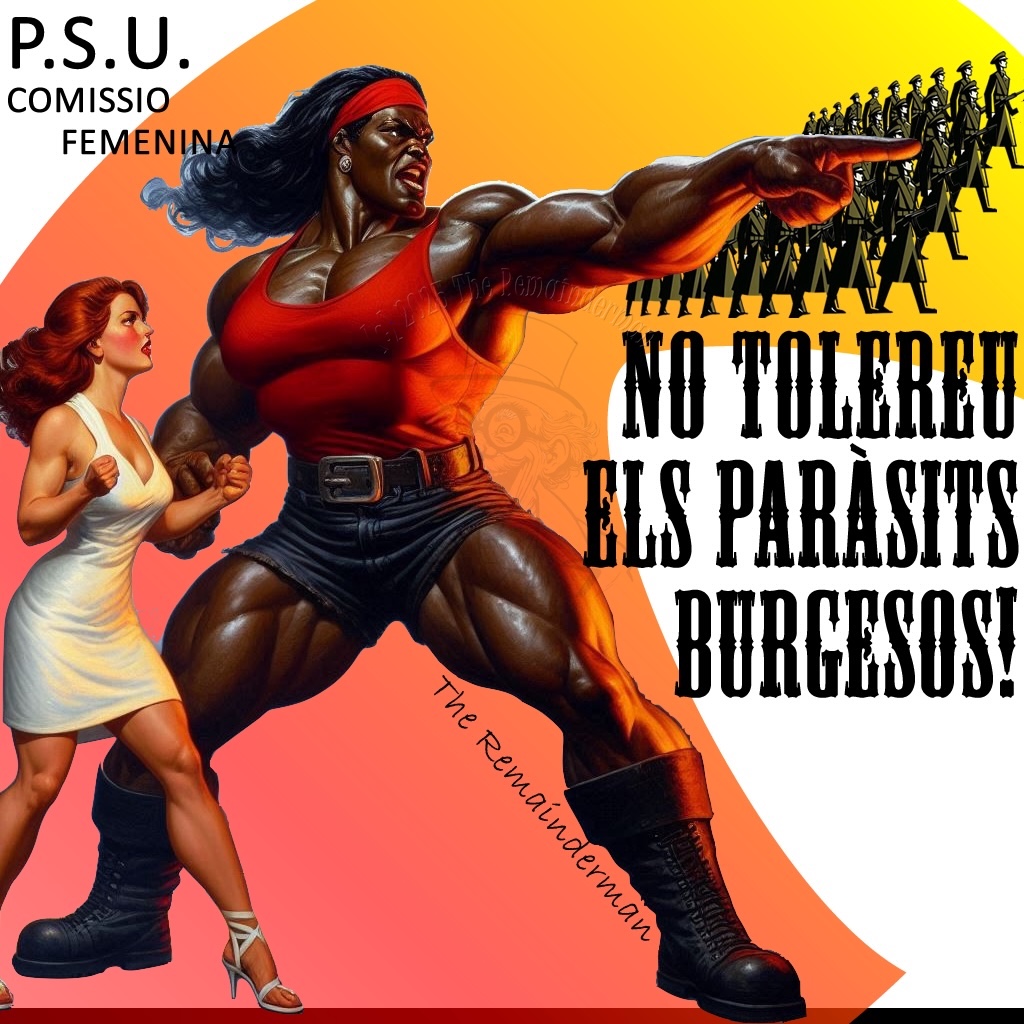
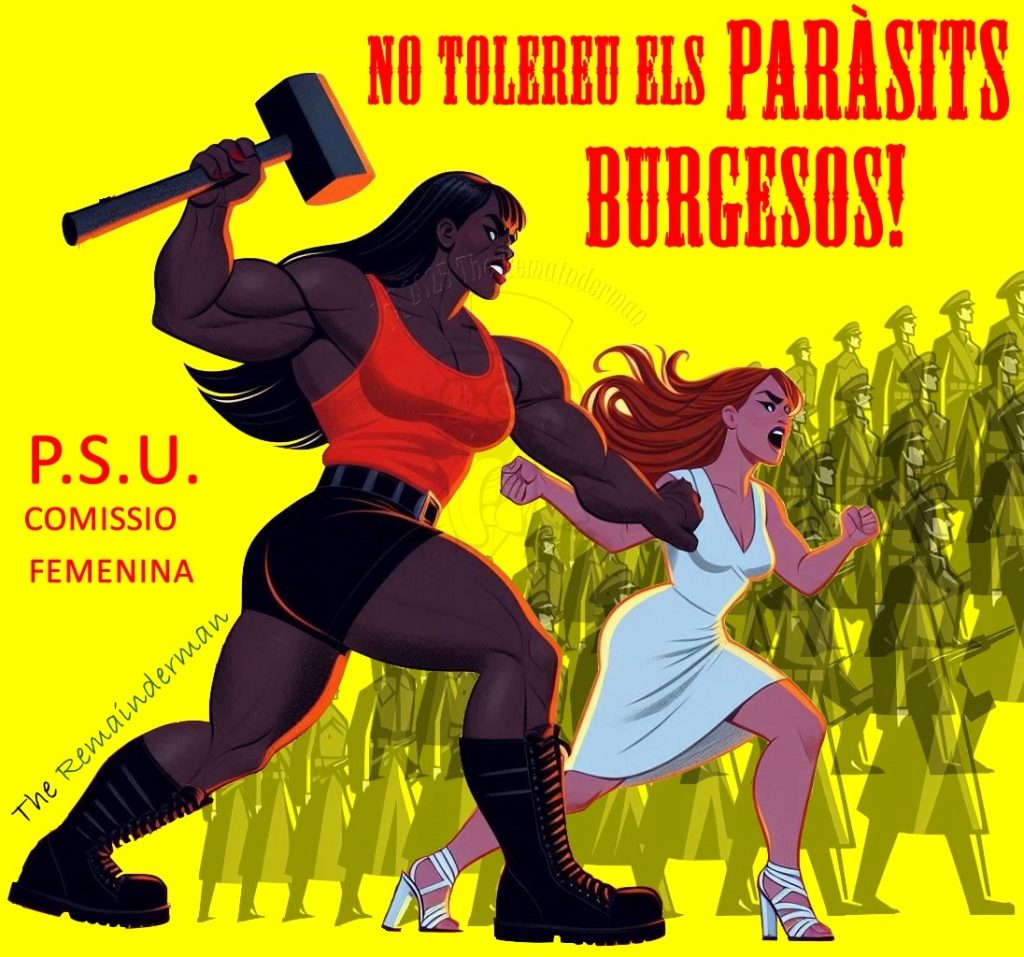
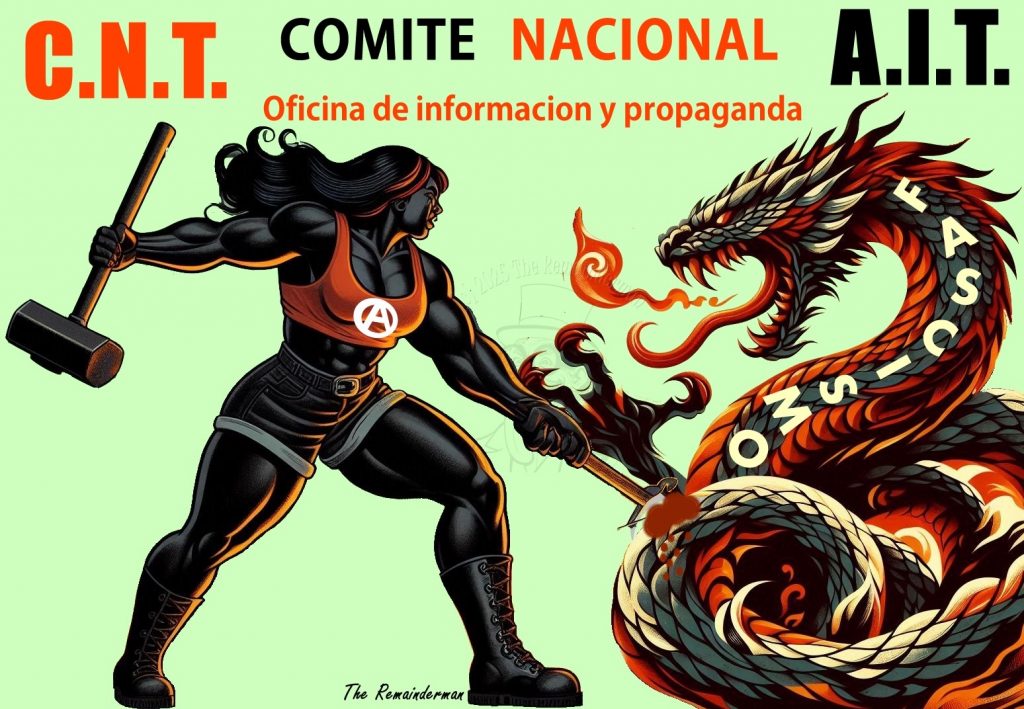
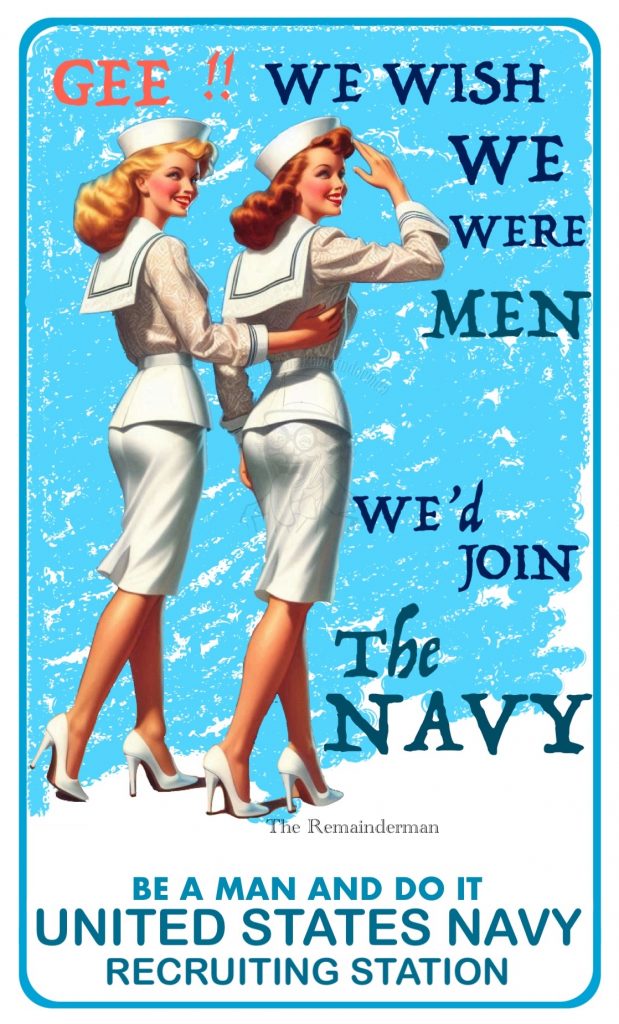
These images are consistent with the general goals of the original project described in subsection A, but expand their subject matter to include World War One and Spanish Civil War images. The World War One image kind of slipped in just because the subject matter was irresistible. The Spanish Civil War images came in first, because it was part of the same era and geopolitical contests that led to World War Two; second, because I was less uncomfortable making unironic and uncritical reinterpretations of Spanish anarchist images than of communist Russian and Chinese ones, yet I didn’t want to entirely neglect the left-leaning Allies or treat them the same way I treated Axis nations despite the fact I more or less view them as similar to the Axis powers. (Recall here that in addition to their abysmal economic and liberty records, Stalin and Hitler actually commenced WW2 in Europe jointly by agreeing to carve up Eastern Europe. Stalin only moved over to the Allied side later, because Hitler stabbed him in the back, forcing him into an uneasy alliance with the Western Allies.) Third, despite some highly traditional messaging for women in some posters, others accepted them as coequals with men and used images of females as role models to recruit men and women alike. Fourth, I was surprised to discover that the anarchists (and some of their left-leaning allies) had a number of posters portraying people of color favorably. Finally, I have to say the Spanish Civil War posters are gorgeous; I at least find them, on average, more dramatic, impactful, and artistic than their World War Two counterparts, so it was a special pleasure to research and reinterpret them. The Spanish Civil War images are also notable for featuring Kadidia in the full glory of her personality and imposing physical presence. Once I started down this path I generated so many images I loved that I increased the number of posters with her in them, most obviously by including alternate versions primarily distinguished by having different images while keeping the same wording.
Literature Section “07-04-B Actual WW1 & Spanish Civil War Posters”—Accompanying Images: 1937A&B, 1938A&B, 1939A, 1943; 1939B—Published 2025-07-05 to 07-08—©2025 The Remainderman. This is a work of fiction, not a book of suggestions. It’s filled with fantasies, idiots, and criminals. Don’t believe them or imitate them.
1937A & 1937B 07-04 The Militias Need You!—2025-07-05. Kadidia; propaganda poster (Arteche 1936); compare https://www.pineroabogado.es/single-post/2014/01/30/carteles-de-la-guerra-civil-espa-c3-b1ola-les-milicies-us-necessiten-2110. Translation (Catalan to English): Les milicies, us necessiten! The militias, they need you! I loved this image, because it uses a woman to recruit soldiers without regard to gender; i.e., unlike most images portraying women, even strong women, this one was not using female images to recruit exclusively females to female-specific units or roles (or to roles that were traditionally, if not necessarily, female, such as nurses), but to the mixed-gender militias, traditionally a male province. Kadidia is so “photogenic” I couldn’t make just one version.
1938A & 1938B 07-04 Do Not Tolerate Bourgeois Parasites!—2025-07-06. Kadidia, Penance; propaganda poster (Bofarull 1938); compare https://www.todocoleccion.net/carteles-guerra-civil/cartell-catala-guerra-civil-no-tolereu-cap-emboscat-bofarull-1937~x27093049. Translation (Catalan to English): Do Not Tolerate Bourgeois Parasites! No Tolereu Els Paraàsits Burgesos!; P.S.U. Comissio Femenina P.S.U. Women’s Commission. This may be my favorite poster of all since the original has a pronounced femdom theme, depicting a fierce woman taking her slinking craven husband by the arm and, brooking no argument, demanding he report for his military duty; which for added effect, was produced by the Women’s Commission of the Unified Socialist Party (of Catalonia). The original wording of the poster was “No Tolereu Cap Emboscat” (Catalan), which translates to “Do Not Tolerate Ambushes.” I changed it because, frankly, the original Catalan didn’t seem to translate clearly or easily to English. Although I can reconstruct how the wording goes with the image, I tried to make the import of the poster clearer, without changing the wording or the sentence structure too much. Again, Kadidia is so “photogenic” I couldn’t make just one version.
1939A 07-04 C.N.T. National Committee A.I.T., Office of Information and Propaganda (ABRIDGED version)—UNABRIDGED VERSION CONTAINING FASCIST IMAGERY AVAILABLE AT PATREON.COM/THEREMAINDERMAN—2025-07-07. Kadidia; propaganda poster (Manuel Monleón 1936); compare https://calisphere.org/item/ark:/20775/bb5768786f/. This is representative of a number of posters from different Republican artists and factions which portrayed fascism as a snake, monster, or beast being battled by lone, heroic, naked or shirtless human. Interestingly, the humans were consistently portrayed as red-tinted (presumably because the left-leaning anarchists, syndicalists, and communists all had flags containing red), and the snakes, monsters, or beasts as green-tinted (presumably because green is the complimentary color to red). I particularly liked the coloring and composition of the 1936 Monleón version so used it here despite the rather boring verbiage which simply identified the source of the image. Having CNT and AIT is understandable; in effect, the poster is announcing these two anarchist organizations are fighting against fascism. The prominent reference to the CNT’s Office of Information and Propaganda is a bit more puzzling; it seems hardly relevant. In any event, other groups such as the Frente Popular de Asturias (“UHP”) had similar posters identifying them as the party of sweaty hunky workers hand-wrestling fascist serpents.
1943 07-04 Gee!! We wish we were MEN We’d join the NAVY—2025-07-08. Chastity & Penance; propaganda poster (Howard Chandler Christy 1918); compare https://www.bonhams.com/auction/30503/lot/68/howard-chandler-christy-1872-1952-gee-i-wish-i-were-a-man-id-join-the-navy/. This image may have been reissued in 1944 during World War Two, and the artist was alive during both wars, but the style of the image and the number of references to 1918, plus the likely retirement age of the artist by 1944, make me tend to believe it was originally a First World War image. I’m actually not a big fan of the original poster, but it was too perfect for ARP given the importance and fluidity of gender, especially Chastity’s and Penance’s. This one could be viewed as ironic or subversive relative to the original, but I interpret the irony here as more a comment on the two characters portrayed, purporting to question their manhood, rather than about the poster or its message.
